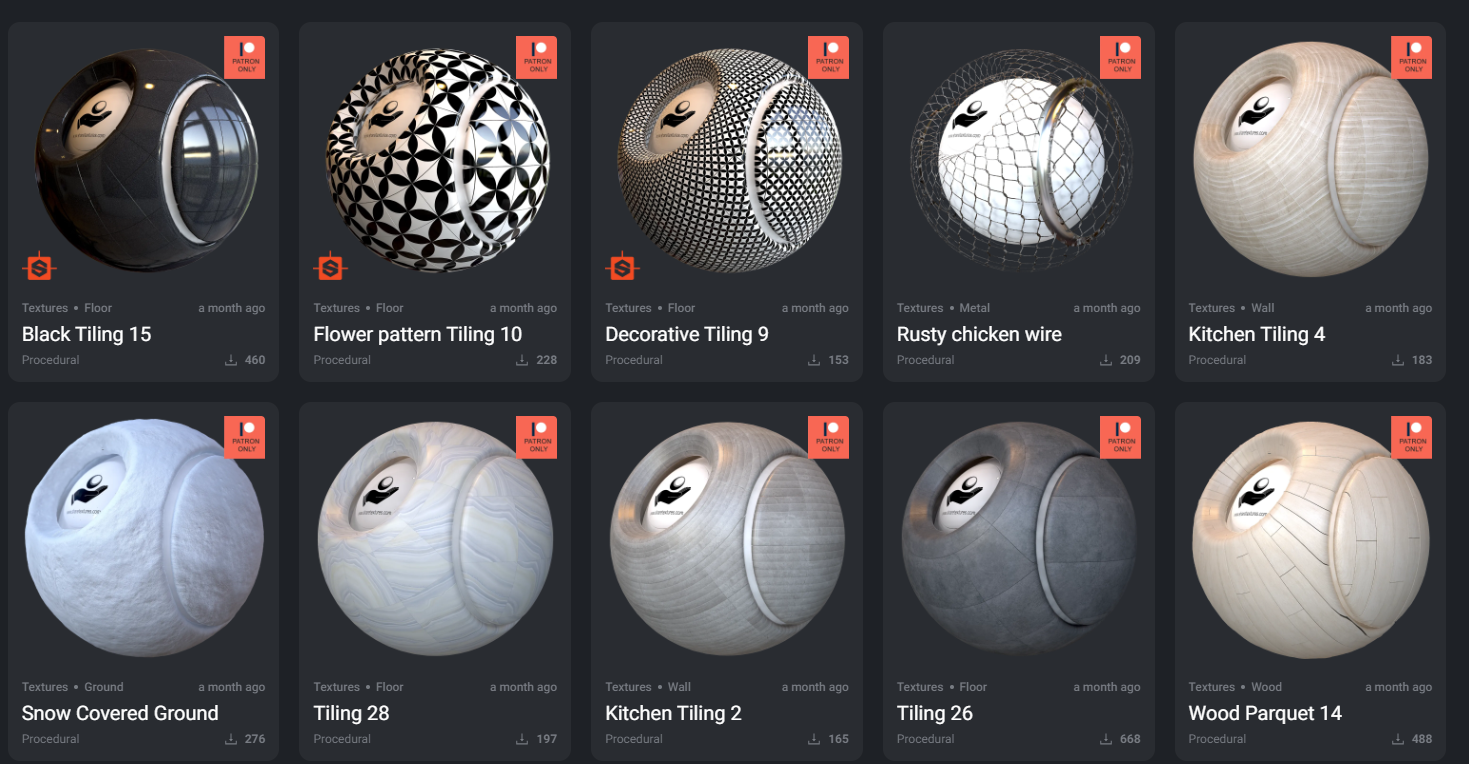Procedural Textures
2 years agoProcedural textures are digital images that are generated using algorithms, rather than being created using traditional methods such as painting or photography. They are a type of computer-generated texture that is often used in computer graphics, video games, and other applications where high-quality, realistic textures are required.
One of the key benefits of procedural textures is that they can be infinitely scaled and modified, without any loss in quality. This is because they are created using algorithms rather than being based on a specific image or photograph. This means that procedural textures can be used to create very detailed and realistic surfaces, and they can be easily adjusted and customized to fit the specific needs of a project.
Procedural textures are also very efficient, as they do not require large amounts of storage space as traditional textures do. This makes them an ideal choice for applications where memory and storage space are limited, such as video games or virtual reality applications.
There are several different types of procedural textures, including noise textures, gradient textures, and pattern textures. Noise textures are created using algorithms that generate random patterns and variations, and they are often used to create realistic surfaces such as stone or wood. Gradient textures are created using smooth transitions between two or more colors, and they are often used to create gradients or color ramps. Pattern textures are created using repeating patterns and are often used to create tiled surfaces such as floor textures or walls.

In summary, procedural textures are digital images that are generated using algorithms rather than being created using traditional methods. They are a powerful tool for creating high-quality, realistic textures, and they are particularly useful for applications where memory and storage space are limited. Whether you are working in computer graphics, video games, or virtual reality, procedural textures can be an essential tool for creating detailed and realistic surfaces.
Substance Designer is a node-based software, which means that it allows users to build complex textures and materials by combining and manipulating different elements, or nodes, in a graph-like structure. This allows users to easily create and customize a wide range of textures and materials, including metals, wood, stone, fabric, and more.
One of the key features of Substance Designer is its powerful texturing and materials creation tools. It includes a wide range of tools and filters that can be used to create highly detailed and realistic textures, including noise generators, gradients, pattern generators, and more. Substance Designer also includes a range of advanced features such as support for PBR (Physically Based Rendering) and UDIM (UV tile) workflows, as well as support for 3D painting and sculpting.
Another key feature of Substance Designer is its powerful integration with other software tools. It is fully compatible with a wide range of 3D software packages, including 3ds Max, Maya, Blender, and more.
This allows users to easily import and export Substance Designer textures and materials into their 3D projects, and it enables seamless integration with other software tools.